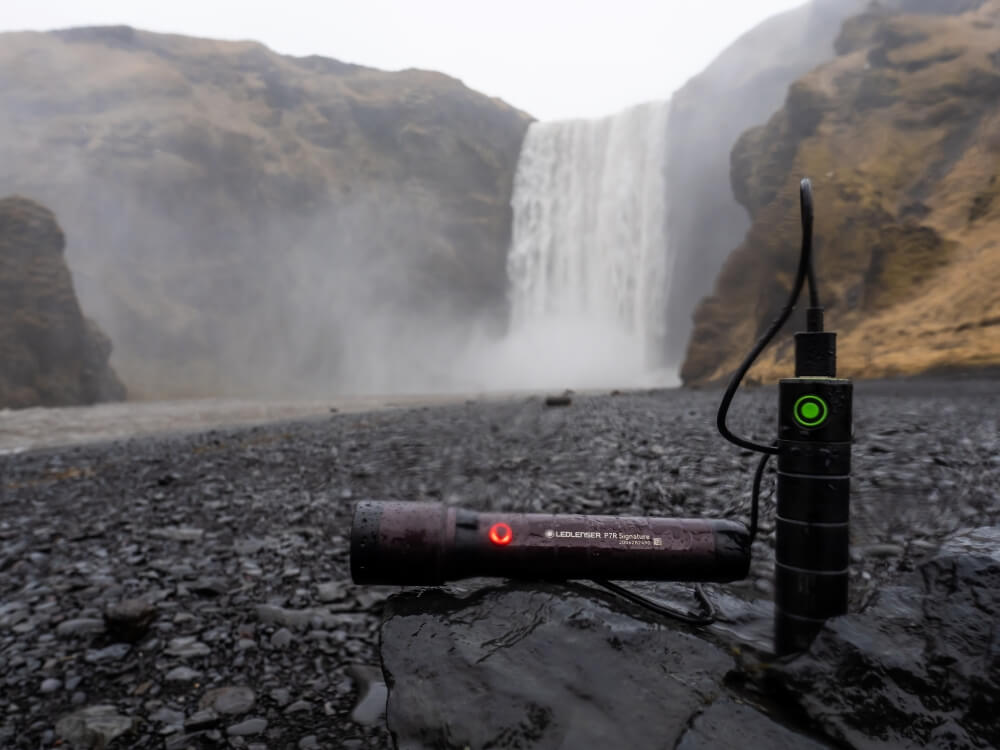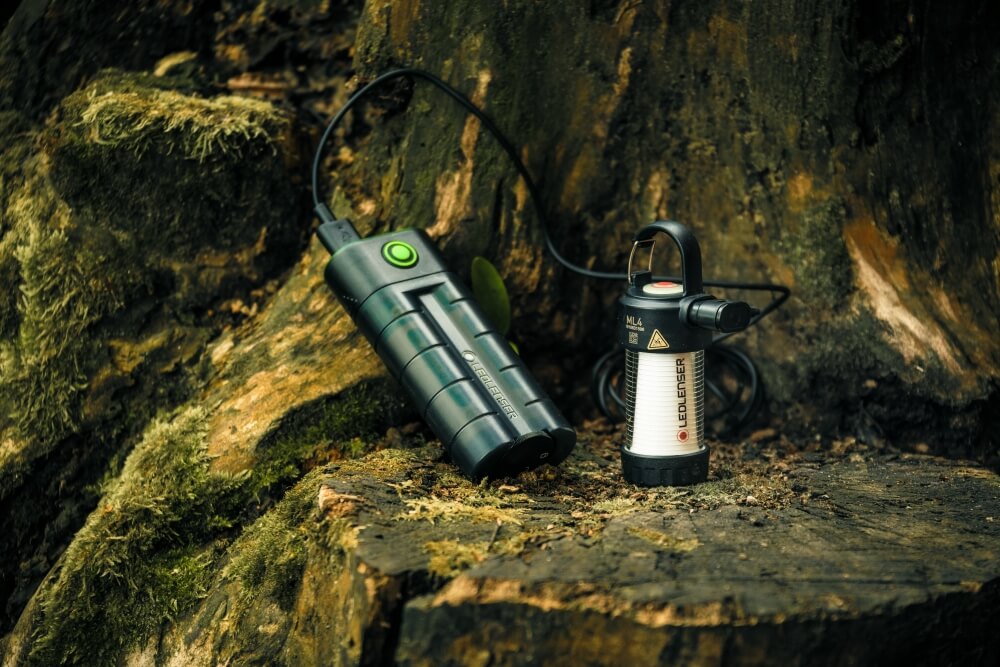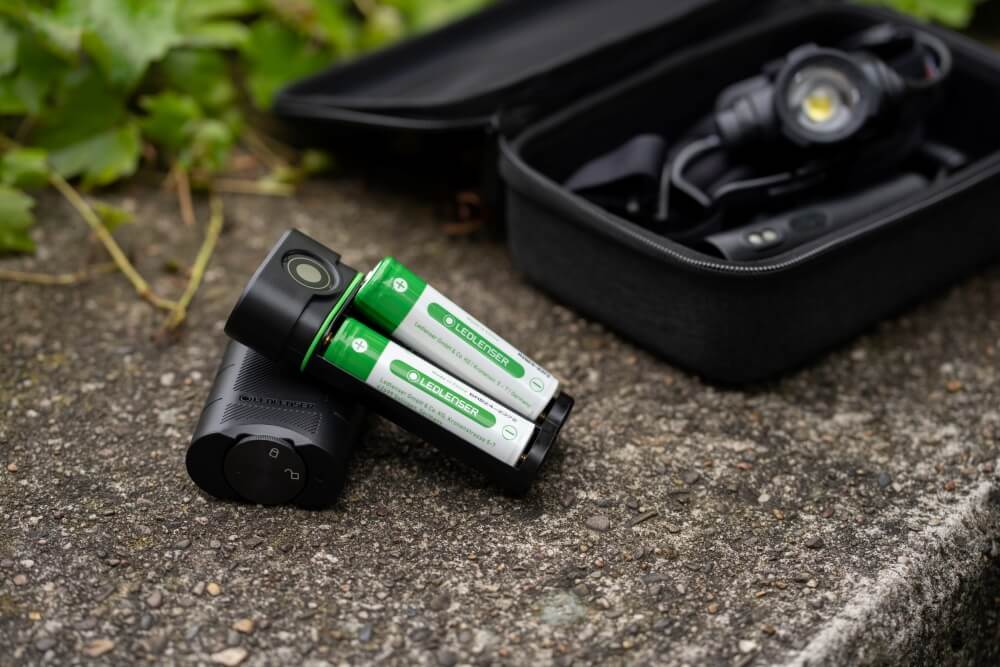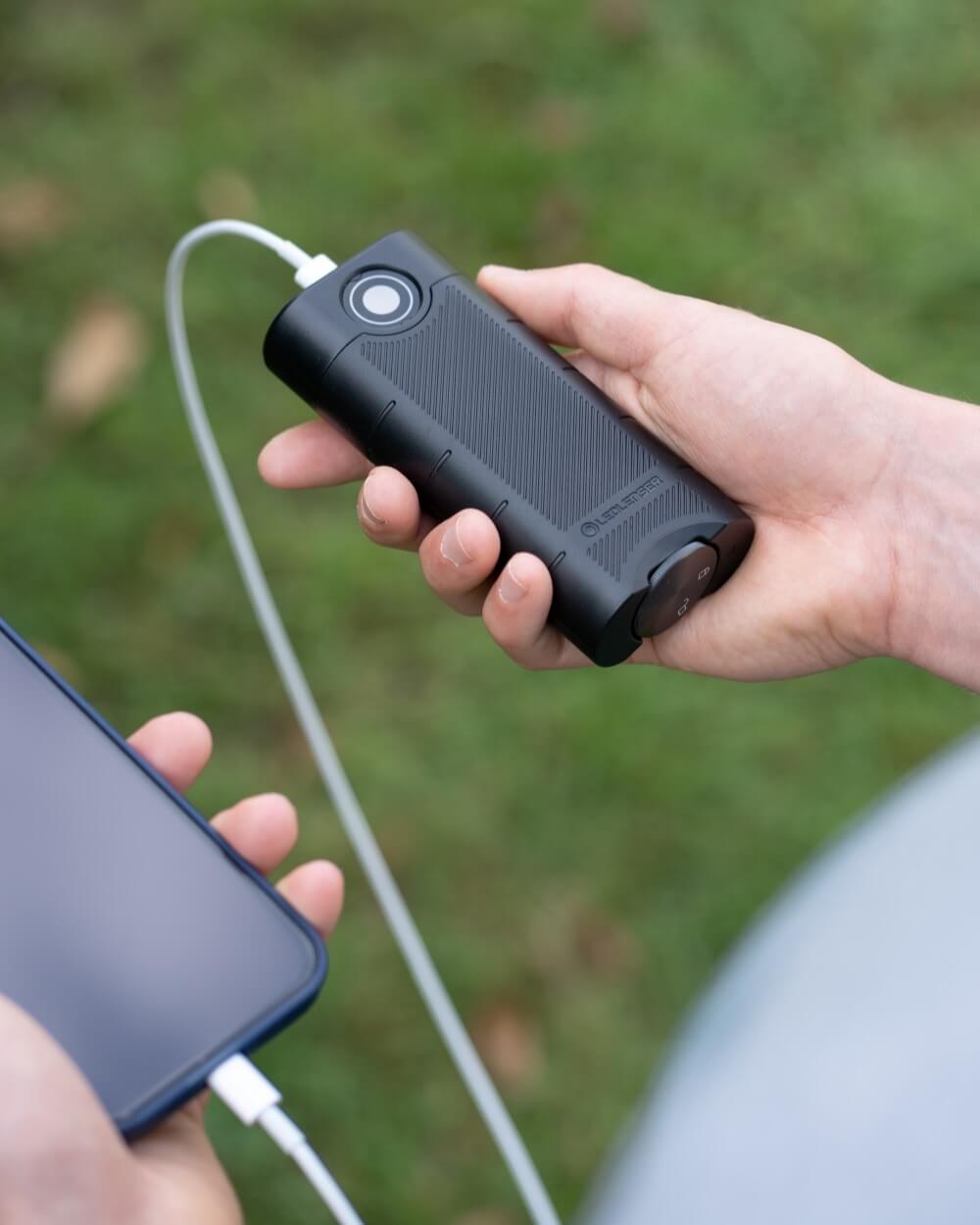The most important features of an outdoor power bank are protection against water and dust (ideally with IP65 certification), a robust housing to protect against knocks, drops and impacts, and a high capacity for longer trips. Fast charging times and a high output power are also an advantage.

- What characterizes an outdoor power bank?
- What features and specifications do good outdoor power banks have?
- What other advantages do Ledlenser power banks have?
- The best outdoor power banks from Ledlenser - more power for lamps, smartphones & co
- Frequently asked questions and answers from readers about outdoor power banks
What characterizes an outdoor power bank?
Outdoor power banks must function reliably under demanding conditions. We'll tell you what makes a good power bank when it comes to use in the great outdoors.
Protection from water, wind and weather
A decisive criterion when you want to buy an outdoor power bank is protection against water and dust. IP65 certification means that the power bank is completely dustproof and protected against water jets from any angle. This feature is important because a power bank that is waterproof is protected against rain and other precipitation.
Robust housing provides protection against knocks, drops and impacts
A robust housing is essential for outdoor power banks. It not only protects against the usual knocks and drops that can occur when hiking or camping, but also against the more severe impacts that occur during adventure sports, for example. A solid construction absorbs the energy of impacts and thus minimizes the risk of damage to the internal components.

What features and specifications do good outdoor power banks have?
When using power banks for hiking or camping, you should pay attention to the specifications. Not every power bank is equally suitable for outdoor use. This chapter focuses on the key features you should consider when buying a good outdoor power bank. You can find more information on this in our guide to the best power banks.
- Capacity and size: The capacity of a power bank, measured in milliampere hours (mAh), determines how much charge it can store. A power bank with a high capacity is recommended for longer trips or for operating several devices. However, a higher capacity often results in a larger and heavier device, which should be taken into consideration for outdoor activities.
In addition to the capacity, the size and weight of the power bank are also important. Compact and lightweight power banks for hiking are easier to carry, but may offer less capacity and output power. The optimal balance between capacity, size and weight is crucial for outdoor use. At 88 grams, the Flex3 is a particularly lightweight powerbank.

- Charging times and output power: The charging time of a power bank is an important factor, especially when there is little time available. Models with short charging times, such as the Ledlenser Flex5, which can be fully charged in just 140 minutes, are ideal for quick recharging on the go.
The output power, specified in watts (W), influences how quickly connected devices can be charged. A minimum output power of 5 watts is recommended for efficient charging. Higher values enable faster charging of your devices. - Connections and compatibility: Newer power banks, such as the Flex5 and Flex10, usually offer USB-C as an input port, which enables faster power transfer. The Flex3 and Flex7, on the other hand, use Micro USB for charging.
USB-A and USB Type-C are common output ports for charging end devices. USB-A is widely used and compatible with most small devices, while USB Type-C offers faster and more efficient power transfer.
What other advantages do Ledlenser power banks have?
In addition to the housing, which protects against shocks, water and dust, and the technical data, Ledlenser rechargeable power banks also offer additional advantages that make the power banks perfect for hiking and other outdoor activities.
- Compatible rechargeable batteries: One advantage of a power bank for on the go is the ability to insert rechargeable batteries directly into compatible devices such as flashlights. Models such as the Flex5 and Flex10 from Ledlenser allow their batteries to be used in devices such as the P7R Work or P7R Signature. The smaller batteries of the Flex3 and Flex7 are suitable for lamps such as the P6R Signature. The power bank also serves as a charger for the device batteries, as they can be charged up to 30% faster in the power bank than in the lamp itself.
- Double protection function: The power banks for trekking and camping also serve as a safe transport box for the batteries, with double protection against short circuits. The Ledlenser batteries supplied are protected on one side by the housing of the power bank and on the other side by their own protective circuit board. This ensures that both the batteries and the powerbank itself are safe during transportation. This feature is particularly useful for outdoor activities where there is a risk of moisture.
- Sustainability and environmental protection: The ability to simply replace defective batteries avoids unnecessary electronic waste. The batteries can be removed at the end of their service life and recycled separately, while the power bank can continue to be used with new batteries. This helps to reduce electronic waste and promotes more sustainable use of electronic devices.

- Special functions for outdoor use: Our power banks stand out from other models with functions such as the low current option, which enables the charging of very small devices with very low charging currents. You can easily charge devices such as headsets, which are not recognized by many power banks.
- Additional features: A charge level indicator allows you to check how full a battery is at any time. Our power banks are also designed in such a way that they can easily be taken on an airplane. This makes it easier for you to take reliable and safe power sources with you on long journeys.
The best outdoor power banks from Ledlenser - more power for lamps, smartphones & co
The power banks with rechargeable batteries from Ledlenser have many advantages for outdoor use. They are not only robust and weatherproof, but can also be used flexibly. The ability to replace the batteries and use them in compatible devices gives you more options and protects the environment by reducing electronic waste. Powerbanks with exchangeable standard batteries are perfectly designed for outdoor use. Whether you're hiking in the mountains, camping or traveling the world, these power banks won't let you down.
Frequently asked questions and answers from readers about outdoor power banks
The capacity of a power bank is specified in milliampere hours (mAh) and determines how much charge it can store. A power bank with a high capacity (>6,000 mAh) is recommended for longer trips or for operating several devices, whereby the balance between capacity, size and weight should be taken into account.
An IP certification, such as IP65, indicates that the power bank is dustproof and protected against water jets from any angle. This is particularly important for outdoor use, as it protects the power bank from rain and other weather influences.
The batteries can be easily replaced. The ability to simply replace defective batteries avoids unnecessary electronic waste. The batteries can be removed at the end of their service life and recycled separately, which helps to reduce electronic waste and promotes more sustainable use of electronic devices. Replacing the batteries is also cheaper than buying a new power bank.
In addition to standard functions such as protection against water and dust and high capacity, Ledlenser power banks also offer special functions such as the low current option, which enables the charging of very small devices with very low charging currents. They also offer double protection against short circuits and a charge level indicator that shows the current battery status.





